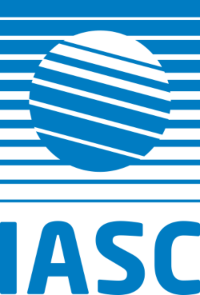Project Report
The 23rd ASOF Workshop, held at Barcelona’s Instituto de Ciencias del Mar (ICM, Institute of Marine Sciences), brought together a diverse group of researchers to enhance our understanding of Arctic and sub-Arctic oceanographic and sea ice processes. The hybrid workshop had a total of 120 participants, with around 20 attendants online. The workshop received IASC Cross-Cutting Workshop funding to support travel of 7 Early Career Researchers (ECR) and Indigenous Scholars to the meeting.
In addition to updates from the key Arctic Gateways (where long-term observations have been delivering time series of heat, volume and freshwater transports in and out of the Arctic since the 1990s), key topics included the use of chemical tracers and synthetic Lagrangian trajectory simulations to investigate water mass pathways and mixing processes. Complementing the outcomes of recent observational field campaigns, a series of talks and posters presented recent advances in remote sensing observations of e.g. sea surface salinity, satellite-derived geostrophic currents, and sea ice cover - these satellite data sets provide a valuable large-scale perspective and can highlight seasonal to interannual variability. Ongoing changes in freshwater content across the Arctic, including the Beaufort Gyre region, and their implications for ocean stratification and circulation patterns in the Nordic Seas and the subpolar North Atlantic were another recurring topic, investigated by several posters and talks.
Presentations of state-of-the-art numerical tools , including remarkably high-resolution models (e.g., 1/60° grid configurations, FESOM, GIGATL1) and ocean reanalyses (GLORYS12), showcased their potential to resolve fine-scale processes and support tracer transport diagnostics. During the concluding session of the meeting, given the urgent need to understand significant recent change, the need for improved and sustained monitoring infrastructure, particularly in key gateways such as the main straits and shelf areas, was discussed. Fjords in both Greenland and Svalbard (particularly those with marine-terminating glaciers) were recognized as critical zones for shelf-ocean interactions and climate sensitivity, warranting targeted observational and modeling efforts. In what is a new link for ASOF, indigenous researcher Anita Lafferty built connections between indigenous and western understandings of rivers in the Canadian Arctic.
The workshop served as an excellent platform for the ECRs to engage with established experts, to present their own work, to receive feedback on their research, and to gain experience chairing sessions. This exchange is vital for fostering new collaborations and connecting with colleagues around the globe, especially for ECSs. Presenting in front of an expert, but friendly audience provides an important scientific training experience. Overall, the workshop successfully combined observational, modeling, and theoretical perspectives to refine our understanding of Arctic-Subarctic physical and biogeochemical marine systems and emphasized the strategic importance of continued investment in both human and technological infrastructure.
Looking Ahead
The next ASOF meeting will take place in Bergen, Norway, from April 20th to April 23rd, 2026. It will build on the experiences and successes of the 2025 Barcelona meeting and will hopefully again provide a venue for ECR to benefit.
Scientific Highlights
- Recent remote sensing observations are becoming increasingly important tools to understand the remote Arctic (e.g., sea surface salinity, surface geostrophic velocities, sea-ice thickness and velocity)
- Tracer studies (chemical + synthetic Lagrangian trajectories) contribute vital information of pathways through the Arctic Ocean
- Updates from long-term observational systems (monitoring of the Arctic Gateway straits) demonstrate significant Arctic changes and are vital to understand and predict Arctic change.
Date and Location
13 – 15 May 2025 | Barcelona, Catalunya, Spain
IASC Working Groups funding the project
- Cryosphere WG
- Marine WG
Project Lead
Laura de Steur (Norwegian Polar Institute, Norway)
Year funded by IASC
2025
